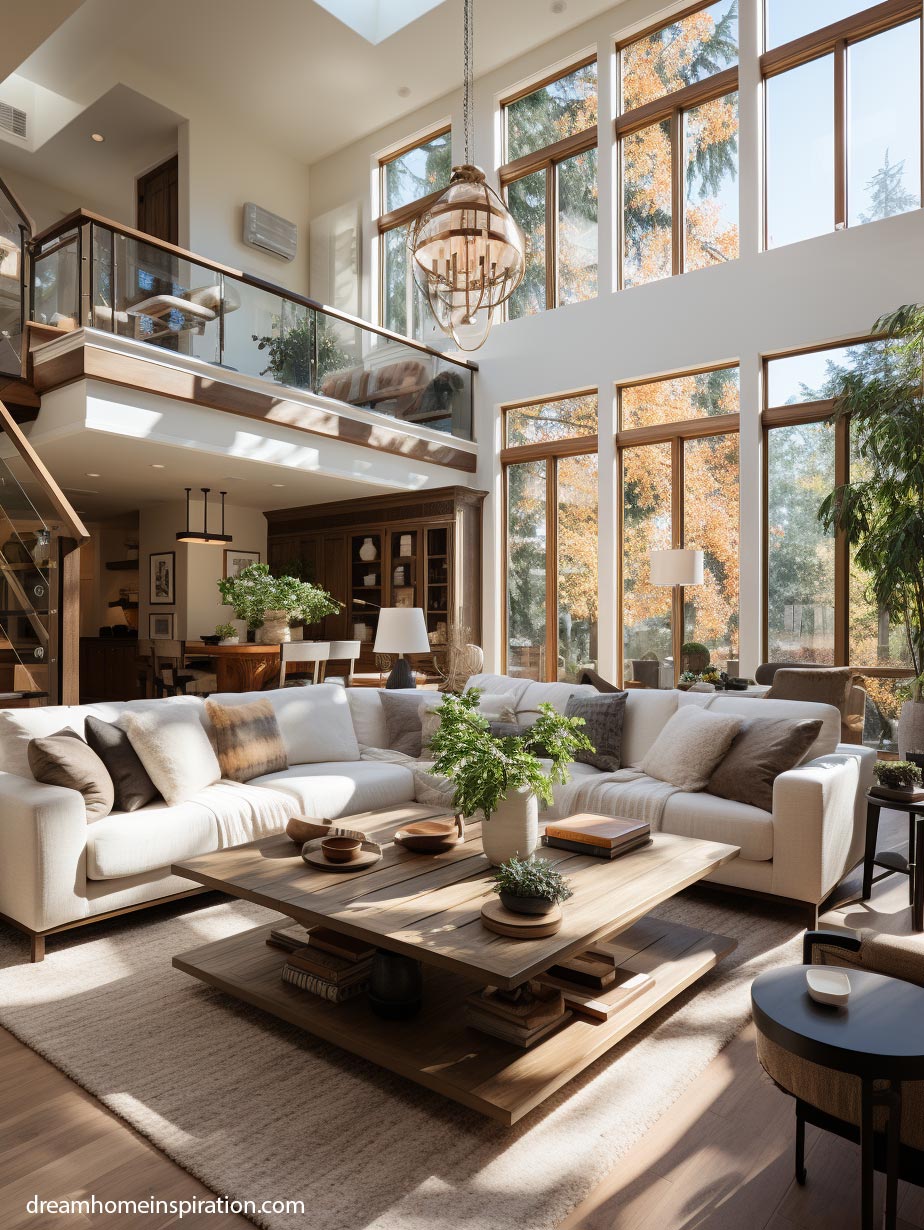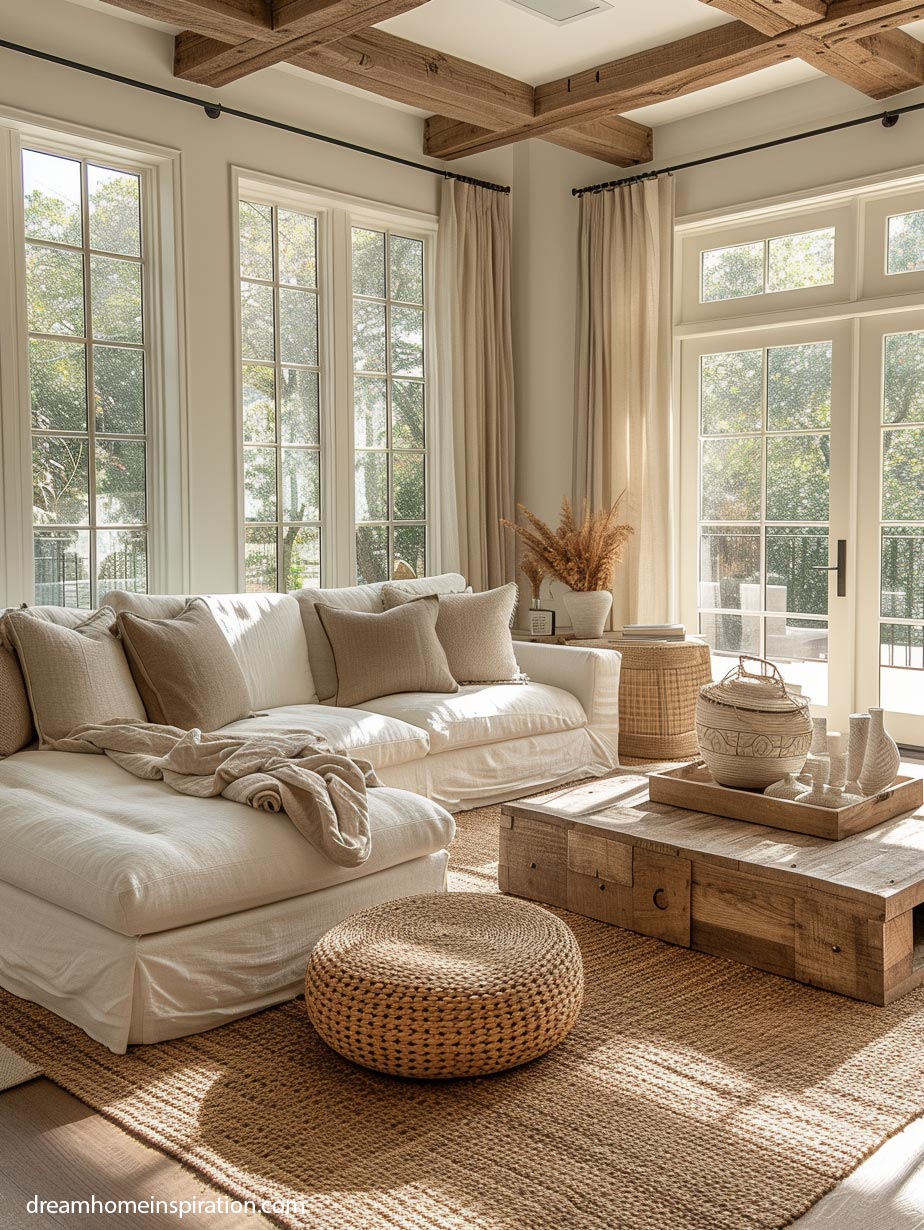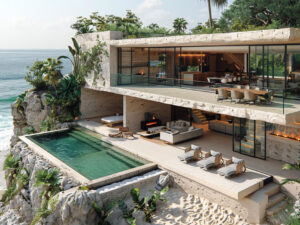Neutral colors in interior design are foundational.
Depending on their use, they offer a sophisticated and versatile palette that can transform spaces into serene havens or dynamic areas.
In this home showcase, we see ways the designer effectively utilizes neutral colors in interior design, ensuring timeless and adaptable spaces.
All photos in this article are AI-generated and are used to showcase beautiful neutral color designs.
Let’s Understand Neutral Colors First
It is essential to understand the range of neutral colors. Neutral colors are not limited to white, beige, and gray only.
They also include soft shades such as muted blues, greens, and pinks, which can add warmth or coolness to a space.
These colors act as a backdrop, highlighting architectural features and furnishings, making them an excellent choice for various design styles.
Incorporating Textures Adds Depth
Incorporating textures is a great way to add depth and interest to rooms with neutral color schemes.
Different materials such as wool, silk, linen, and natural wood can introduce subtle variations without disrupting the overall look.
Textures interact with light and shadow. This imparts a tactile dimension to the space, making it feel more inviting and lived-in.
Layering Your Neutral Colors
Layering is a technique that can help to improve the look of neutral interiors.
By creating a layered design effect, you can add complexity and sophistication to the room.
The layering effect in design can be achieved using shades and tones within the same color family.
For example, you can combine light gray walls with charcoal upholstery and silver accents to produce a dynamic yet harmonious atmosphere.
Lighting is Crucial In Neutral Design
Lighting is a crucial factor in spaces that feature neutral colors.
Natural light is particularly effective at bringing out the best in neutral colors. It emphasizes their underlying tones and creates a dynamic environment.
Consider incorporating accent lighting in spaces with limited natural light to simulate the effect of highlighting textures and colors in the room.
Incorporating Natural Earth Elements
Incorporating natural elements can also elevate a neutral interior.
Wood, stone, and plants introduce color and texture, breaking the monotony without straying from the neutral theme.
These elements bring an outdoor feel inside, promoting a sense of calm and connection to nature.
Don’t Forget The Accessories
Art and accessories are where you can subtly introduce color into a neutral space, acting as focal points or conversation starters.
Pieces with pops of color or interesting patterns can draw the eye, offering a controlled yet impactful use of color within a predominantly neutral scheme.
Pick Furniture To Enhance Balance
Furniture selection is crucial in neutral spaces.
Pieces with clean lines and simple forms maintain the minimalist aesthetic, while more ornate or unique pieces can serve as statement items.
The key is balance; too much simplicity can feel stark, while too much complexity can overwhelm the neutral theme.
Evergreen Design Trend
Flexibility is one of the most significant advantages of using neutral colors in interior design.
Neutrals provide a timeless backdrop that can quickly adapt to changing trends or personal tastes.
Swapping out accessories, art, or even a single furniture piece can completely transform the look and feel of a room without the need for a significant overhaul.
Don’t Forget About Your Personality
Finally, you should add your personalized touch to neutral designs.
A neutral color scheme benefits greatly from personal touches that reflect your personality and stories.
Whether through family heirlooms, travel souvenirs, or handmade items, these elements ensure a neutral space feels warm, inviting, and distinctly your own.
Utilizing Neutral Colors In Interior Design
In conclusion, utilizing neutral colors in interior design offers possibilities.
You can create sophisticated and inviting spaces by understanding the range of neutrals, incorporating texture and layering, emphasizing natural light, and adding personal touches.
Neutral interiors stand the test of time, gracefully adapting to life’s changes while providing a serene backdrop for everyday living.









































